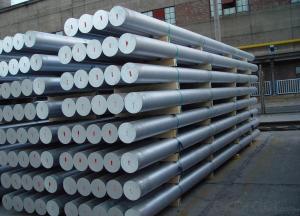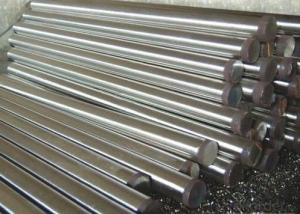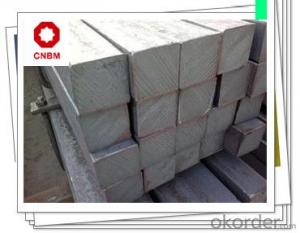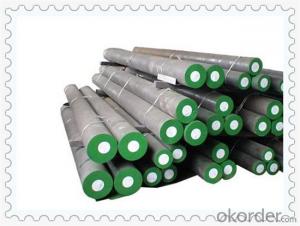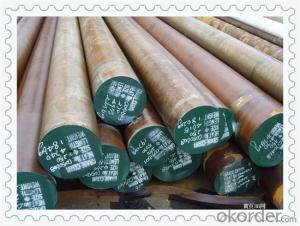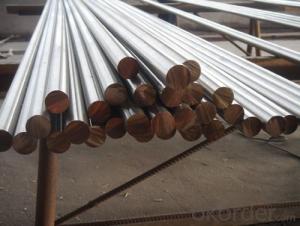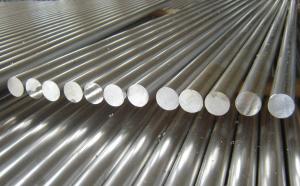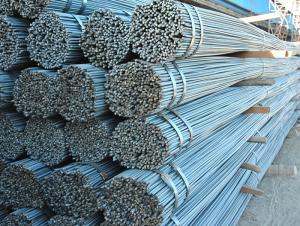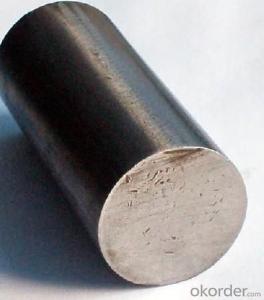Round bar Q235 Hot Rolled High Quality 5MM-100MM
- Loading Port:
- Tianjin
- Payment Terms:
- TT or LC
- Min Order Qty:
- 25 m.t.
- Supply Capability:
- 200000 m.t./month
OKorder Service Pledge
OKorder Financial Service
You Might Also Like
Product Description:
OKorder is offering Round bar Q235 Hot Rolled High Quality 5MM-100MM at great prices with worldwide shipping. Our supplier is a world-class manufacturer of steel, with our products utilized the world over. OKorder annually supplies products to European, North American and Asian markets. We provide quotations within 24 hours of receiving an inquiry and guarantee competitive prices.
Product Applications:
According to the needs of different structures, Angle can compose to different force support component, and also can be the connections between components. It is widely used in various building structures and engineering structures such as roof beams, bridges, transmission towers, hoisting machinery and transport machinery, ships, industrial furnaces, reaction tower, container frame and warehouse etc
Product Advantages:
OKorder's Round bar Q235 Hot Rolled High Quality 5MM-100MM are durable, strong, and resist corrosion.
Main Product Features:
· Premium quality
· Prompt delivery & seaworthy packing (30 days after receiving deposit)
· Corrosion resistance
· Can be recycled and reused
· Mill test certification
· Professional Service
· Competitive pricing
Product Specifications:
Manufacture: Hot rolled
Grade: Q195 – 235
Certificates: ISO, SGS, BV, CIQ
Length: 6m – 12m, as per customer request
Packaging: Export packing, nude packing, bundled
Sizes: 25mm-250mm | ||||||||||||
a*t | ||||||||||||
25*2.5-4.0 | 70*6.0-9.0 | 130*9.0-15 | ||||||||||
30*2.5-6.6 | 75*6.0-9.0 | 140*10-14 | ||||||||||
36*3.0-5.0 | 80*5.0-10 | 150*10-20 | ||||||||||
38*2.3-6.0 | 90*7.0-10 | 160*10-16 | ||||||||||
40*3.0-5.0 | 100*6.0-12 | 175*12-15 | ||||||||||
45*4.0-6.0 | 110*8.0-10 | 180*12-18 | ||||||||||
50*4.0-6.0 | 120*6.0-15 | 200*14-25 | ||||||||||
60*4.0-8.0 | 125*8.0-14 | 250*25 | ||||||||||
FAQ:
Q1: How soon can we receive the product after purchase?
A1: Within three days of placing an order, we will begin production. The specific shipping date is dependent upon international and government factors, but is typically 7 to 10 workdays.
Q2: What makes stainless steel stainless?
A2: Stainless steel must contain at least 10.5 % chromium. It is this element that reacts with the oxygen in the air to form a complex chrome-oxide surface layer that is invisible but strong enough to prevent further oxygen from "staining" (rusting) the surface. Higher levels of chromium and the addition of other alloying elements such as nickel and molybdenum enhance this surface layer and improve the corrosion resistance of the stainless material.
Q3: Can stainless steel rust?
A3: Stainless does not "rust" as you think of regular steel rusting with a red oxide on the surface that flakes off. If you see red rust it is probably due to some iron particles that have contaminated the surface of the stainless steel and it is these iron particles that are rusting. Look at the source of the rusting and see if you can remove it from the surface.
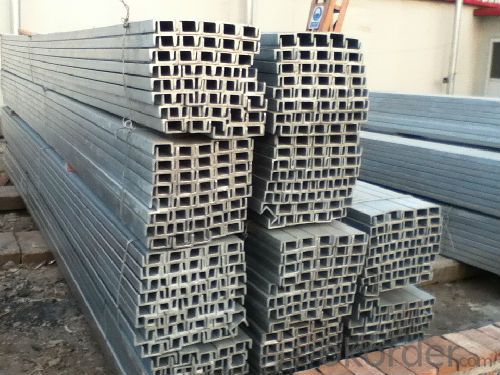
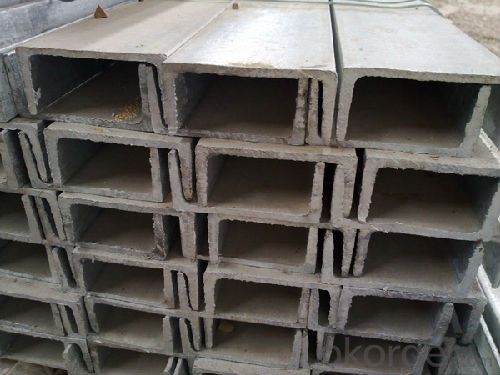
- Q: What is the difference between a bright and a cold finished steel round bar?
- Two distinct types of steel bars are the bright steel round bar and the cold finished steel round bar. These bars differ in their manufacturing processes and resulting characteristics. The bright steel round bar, also known as a turned or polished bar, undergoes a process called turning or polishing. During this process, a lathe machine rotates the rough steel bar while a cutting tool removes its outer layer. This results in a smooth and shiny surface, enhancing the bar's appearance, dimensional accuracy, and surface finish. Bright steel round bars are commonly used in applications where aesthetics and a high-quality surface finish are important, such as architectural components, decorative items, and certain automotive parts. On the other hand, the cold finished steel round bar undergoes a different manufacturing process called cold drawing or cold rolling. This process involves passing the hot-rolled steel bar through a series of dies at room temperature. As a result, the bar's diameter is reduced while its length is increased. This cold working process improves the mechanical properties of the steel bar, including increased tensile strength, improved yield strength, and enhanced dimensional accuracy. Cold finished steel round bars are often used in applications that require high strength and precision, such as shafts, gears, bolts, and tools. In conclusion, the main distinction between the bright steel round bar and the cold finished steel round bar lies in their manufacturing processes and resulting characteristics. The bright steel round bar is turned or polished to achieve a smooth and shiny surface, while the cold finished steel round bar undergoes cold drawing or rolling to enhance its mechanical properties and dimensional accuracy. The choice between these two types of steel bars depends on the specific requirements of the application, such as the need for aesthetics, surface finish, strength, or precision.
- Q: What is the typical price range for steel round bars?
- The typical price range for steel round bars varies depending on factors such as size, grade, and market conditions. However, generally speaking, steel round bars can range in price from $0.50 to $10 per pound.
- Q: What is the maximum temperature that steel round bars can withstand?
- The maximum temperature a steel round bar can tolerate depends on the grade or type of steel used. In general, carbon steel can endure temperatures of up to approximately 1,482 degrees Celsius (2,700 degrees Fahrenheit) before its structural integrity starts to deteriorate. However, it is worth noting that the maximum temperature tolerance of steel can be altered by different alloying elements and manufacturing processes. For instance, stainless steel can withstand higher temperatures compared to carbon steel because of its increased resistance to oxidation and corrosion. Additionally, the duration of exposure to high temperatures must be taken into account, as prolonged heat exposure can cause the steel to soften and eventually fail. Therefore, it is crucial to refer to the manufacturer's specifications or seek professional advice to determine the maximum temperature a specific steel round bar can endure in a given application.
- Q: What are the common industries that use steel round bars?
- Some common industries that use steel round bars include construction, manufacturing, automotive, aerospace, oil and gas, and machinery.
- Q: What is the tolerance for diameter and length of steel round bars?
- The tolerance of steel round bars' diameter and length may vary depending on industry standards and requirements. Typically, diameter tolerances are specified as a deviation, either positive or negative, from the nominal diameter. For example, a tolerance of +/- 0.005 inches implies that the actual diameter can deviate by up to 0.005 inches from the nominal diameter. Similarly, length tolerances are also expressed as a deviation, either positive or negative, from the nominal length. These tolerances can be indicated as a percentage or an absolute value. For instance, a tolerance of +/- 1% or +/- 0.5 inches means that the actual length can deviate by up to 1% of the nominal length or 0.5 inches, whichever is greater. It's worth noting that different industries may have diverse tolerance requirements depending on the specific applications and intended use of steel round bars. Hence, it is vital to refer to the relevant industry standards or consult with the manufacturer or supplier to determine the precise tolerance specifications for diameter and length in a specific context.
- Q: What are the advantages of using nickel-chromium-titanium alloy steel round bars?
- There are several advantages of using nickel-chromium-titanium alloy steel round bars: 1. High Strength: Nickel-chromium-titanium alloy steel round bars are known for their exceptional strength and durability. They have a high tensile strength, making them suitable for applications requiring heavy-duty materials. 2. Corrosion Resistance: These alloy steel round bars have excellent corrosion resistance properties due to the presence of nickel and chromium. This makes them ideal for use in environments where exposure to moisture, chemicals, or harsh conditions is common. 3. Heat Resistance: Nickel-chromium-titanium alloy steel round bars can withstand high temperatures without losing their mechanical properties. They exhibit good heat resistance, making them suitable for applications in industries such as aerospace, power generation, and automotive. 4. Fatigue Resistance: The unique composition of nickel-chromium-titanium alloy steel round bars provides excellent fatigue resistance, allowing them to withstand repeated stress and load cycles without deformation or failure. This makes them suitable for applications in high-stress environments. 5. Machinability: Despite their high strength and toughness, nickel-chromium-titanium alloy steel round bars are relatively easy to machine. They can be easily cut, drilled, or shaped, allowing for efficient and precise manufacturing processes. 6. Versatility: These alloy steel round bars have a wide range of applications due to their versatile properties. They can be used in industries such as construction, automotive, aerospace, marine, and many more. Their high strength and corrosion resistance make them suitable for various structural and load-bearing applications. Overall, nickel-chromium-titanium alloy steel round bars offer a combination of high strength, corrosion resistance, heat resistance, fatigue resistance, machinability, and versatility, making them a preferred choice for many industrial applications.
- Q: How are steel round bars used in the construction of high-rise buildings?
- Steel round bars are commonly used in the construction of high-rise buildings due to their strength, durability, and versatility. These bars are typically made of carbon steel, which has excellent mechanical properties and can withstand high loads and pressures. In the construction of high-rise buildings, steel round bars are primarily used in reinforced concrete structures. They are commonly used as reinforcement in concrete beams, columns, and slabs. The bars are embedded in the concrete to provide additional strength and stiffness to the overall structure. One of the main advantages of using steel round bars is their ability to resist tension forces. Concrete is strong in compression but weak in tension, so the steel bars act as tension reinforcement, preventing the concrete from cracking or failing under tension loads. This helps to enhance the structural integrity and overall safety of the building. Additionally, steel round bars can be easily bent, shaped, and welded, allowing for flexible design and construction possibilities. They can be customized to specific lengths and diameters to suit the requirements of the building project. This versatility makes them ideal for constructing various structural elements, such as beams and columns, which need to be precisely engineered to support the weight and stresses of a high-rise building. Moreover, steel round bars have excellent resistance to corrosion, which is crucial in the construction of high-rise buildings that are exposed to various environmental elements. The corrosion-resistant properties of steel ensure the long-term durability and lifespan of the structure. Overall, steel round bars play a vital role in the construction of high-rise buildings by providing strength, durability, and flexibility to the reinforced concrete structures. They enhance the overall structural integrity, safety, and longevity of the building, making them an essential component in modern construction practices.
- Q: 45# what are the main rounds for?
- 45# round bars are divided into three kinds: hot rolling, forging and cold drawing. Standard Specification for hot rolled round steel is 5.5-250 mm. Of them: 5.5-25 mm small round bars are mostly supplied by straight strips. They are used as reinforcing bars, bolts and various mechanical parts. They are more than 25 millimeters of round steel. They are mainly used in the manufacture of mechanical parts or seamless steel tube billets.
- Q: What are the advantages of using nickel-lead alloy steel round bars?
- There are several advantages of using nickel-lead alloy steel round bars. Firstly, these bars have excellent corrosion resistance properties, making them suitable for applications in harsh environments or corrosive substances. Secondly, the addition of nickel and lead enhances the machinability of the bars, allowing for easier shaping and forming processes. Additionally, nickel-lead alloy steel round bars exhibit good strength and durability, making them suitable for high-stress applications. Lastly, these bars offer good thermal and electrical conductivity, making them ideal for applications that require heat transfer or electrical conduction.
- Q: What are the different grades of alloy steel round bars for automotive applications?
- Automotive applications commonly utilize alloy steel round bars due to their exceptional strength, durability, and resistance to wear and corrosion. The grading of these bars is typically based on their chemical composition, mechanical properties, and appropriateness for specific automotive uses. Here are several distinct grades of alloy steel round bars frequently employed in automotive applications: 1. 4140/42CrMo4: Renowned for its high tensile strength, good toughness, and excellent fatigue strength, this grade of alloy steel round bars is extensively employed in gears, crankshafts, axles, and suspension components. 2. 8620: Offering exceptional hardenability, this grade of alloy steel round bars can be subjected to heat treatment to attain high strength and toughness. It is commonly utilized in shafts, gears, and camshafts. 3. 4340: Known for its impressive strength and toughness, this grade of alloy steel round bars provides good wear resistance and can be heat treated to achieve even greater hardness and strength. It is often used in connecting rods, crankshafts, and high-stress components. 4. 52100: This high carbon, chromium alloy steel is renowned for its outstanding hardness and wear resistance. It is commonly employed in applications such as bearings and races that require high strength and durability. 5. 316L: Recognized for its exceptional corrosion resistance, particularly in harsh environments, this grade of alloy steel round bars is frequently utilized in automotive applications like exhaust systems, where resistance to corrosion is crucial. 6. 4340M: Specifically designed for high-performance automotive applications, this modified version of the 4340 grade offers improved fatigue strength and toughness. It is suitable for demanding applications, including high-performance engine components. These examples represent only a few of the various grades of alloy steel round bars employed in automotive applications. The selection of a specific grade depends on the requirements of the application, including desired strength, toughness, wear resistance, and corrosion resistance.
Send your message to us
Round bar Q235 Hot Rolled High Quality 5MM-100MM
- Loading Port:
- Tianjin
- Payment Terms:
- TT or LC
- Min Order Qty:
- 25 m.t.
- Supply Capability:
- 200000 m.t./month
OKorder Service Pledge
OKorder Financial Service
Similar products
Hot products
Hot Searches
